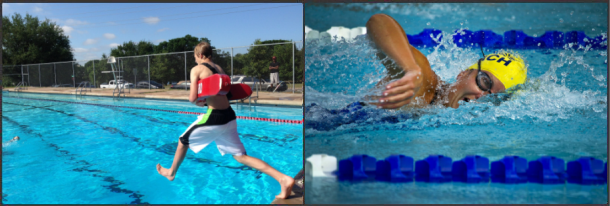The most important role of a lifeguard is to watch the allocated water and rescue weak or injured swimmers to safety. A lifeguard’s duties include making sure people are abiding by the swimming rules keeping track of each swimmer in the water and giving first aid to injured swimmers.
A lifeguard is an important job and ensures swimmers we are always safe. You may find a lifeguard by a pool, beach, river and waterpark sat up in a lifeguard tower. The lifeguard tower allows them to be able to see a long-distance range easily, so they can always see what is going on. Lifeguards are given training on swimming and first aid in order for them to be prepared for any situation thrown to them.
FUN FACT:
In order to become a lifeguard, the minimum you need to be able to do is:
– Jump/dive into deep water.
– Swim 50 metres in less than 60 seconds.
– Swim 100 metres continuously on front and back in deep water.
– Tread water for 30 seconds.
Are you able to become a lifeguard?
History
The first lifeguard training was made by George Douglas Freeth in 1903 in California. Later in 1914 Commodore Wilbert made the American Red Cross Lifesaving. The American Red Cross Lifesaving was set up to train swimmers in America. In England our equivalent is the Royal Lifesaving Society. Which was set up by William Henry a champion swimmer in the 1908 London Olympic Games.
Lifeguarding in other countries
However, lifeguards in other countries have some added jobs. In countries such as America and Australia sharks can often be found in the water. The lifeguard must ensure they are asked to keep an eye for shark fins. Furthermore, lifeguards must look out for people waving their hands and shouting for help if they saw a shark.

Respecting lifeguards
Lifeguards should not be spoken to when on duty unless a relevant question such as: asking them for help, which pool is for which age, and learn about the safest places for swimming. It is important that they do not get distracted for too long as they need to be concentrating on watching the water. Lifeguards in an interview explained it is not their duty to help ‘look for toys’.
Movies vs Reality
What we know about drowning is normally based on reality. However, drowning looks different in real life then how the movies seem. Lifeguards say that there are a lot of parents who are on their phones while their children are swimming. While you are sharing your new photos on social media, your child might not only get lost but could drown.
Lifeguards say it’s really hard to identify a drowning person. When a person is drowning, they are trying to get as much air as possible, so you can see their head with an open mouth. However, unlike in the movies drowning people don’t always wave their hands. Adult people usually put their hands to the sides to push and swim. Children put their hands forward. They might not even notice a lifeline.

Lifeguard Services
Lifeguard services provide an easy way to hire a fully qualified lifeguard for permanent, short and long term hire. We provides an easy way to make sure your allocated water is in safe hands. To find our more and book please see our booking page.




Leave a Reply